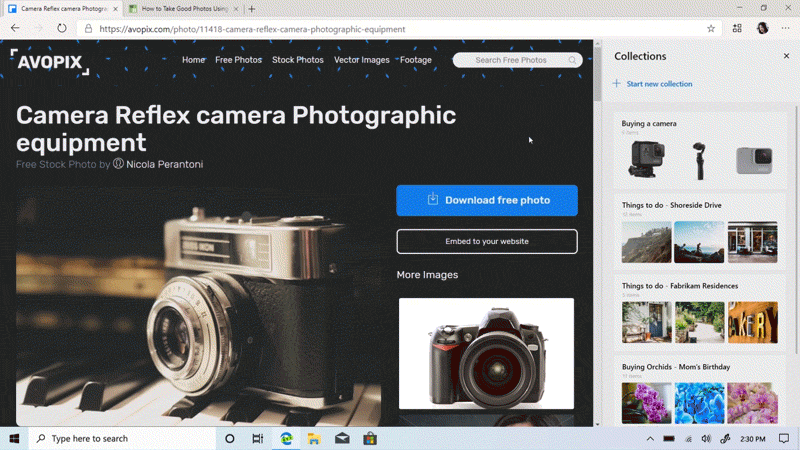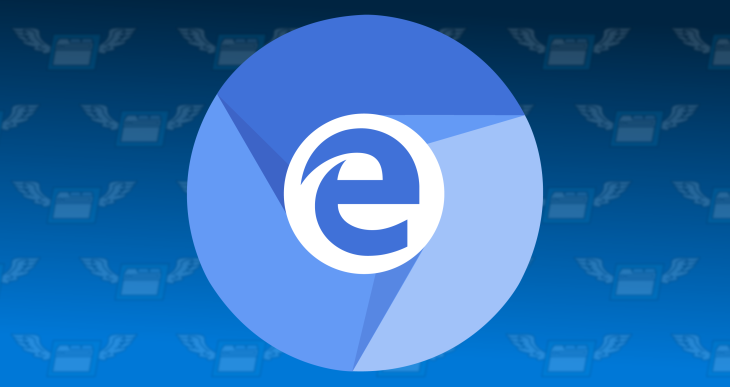Microsoft is unveiling a number of new features for its upcoming Edge Chromium browser today.
The first big addition is a new “IE Mode” for Edge that will allow businesses to load old sites directly in the new Edge Chromium browser, using the Internet Explorer rendering engine. Microsoft is building IE directly into Edge for this purpose, so businesses aren’t forced to directly use IE for ancient internal sites.
“What we’re going to do is make this totally seamless,” explains Microsoft’s Joe Belfiore, in an interview with The Verge. Currently, the existing version of Edge will open Internet Explorer 11 on Windows 10, which has a separate interface, favorites, and doesn’t work well on modern websites. This new IE mode literally loads the content within Edge, so you’d never be able to tell the difference, apart from a small IE logo on the tab that indicates that this mode has been enabled.

This new IE mode is designed exclusively for businesses, and Belfiore admits it’s a big pitch to get them to use Edge Chromium instead of a combination of Chrome and Internet Explorer. “We’ve got a browser for you that updates regularly that will go on Windows 7 and the Mac that handles things like IT customization of the New Tab page and Microsoft Search, and IE built-in,” says Belfiore.
Microsoft is also allowing businesses to customize the New Tab page for Edge Chromium. This will involve a custom company logo, the option to load some sites into the top tabs, and integration with Microsoft Search and Office 365.
While these features will be mainly targeted at businesses, Microsoft is also building an entirely new Collections feature for Edge Chromium. This is perhaps the most interesting feature addition to Edge so far, and it’s designed for web users to be able to more easily collect text, images, and information from the internet into a note. It goes beyond simple notes, though. Microsoft is linking the images you drag and drop into these collections, and even text into references back to the original websites where you found them.

You’ll then be able to share this with friends or family via email or instantly export it to Word or Excel. This seems super useful if you’re collecting information about a big purchase, as you’ll be able to export to a list in Excel that can be sorted by price. If you’re a teacher or student collecting information from the web, then these collections will all have citations. It’s even useful if you’re just researching vacation locations and you want to easily share your collection of information.
Microsoft is also focusing on privacy enhancements to Edge, specifically on blocking web trackers that follow you on the web. Microsoft has been on a privacy mission in recent years, and it’s something CEO Satya Nadella constantly talks about focusing on. “We’re going to give you, the user, control over your privacy and try to explain in a way that’s clear,” explains Belfiore.
Microsoft is planning to create a single privacy page in Edge that will allow users to choose from three different levels: unrestricted, balanced, and strict. All three are designed to block malicious trackers on the web, but the level of ad tracking will vary a lot across each mode. Unrestricted is designed to allow trackers from all sites, with personalized ads. Balanced mode, which should be the default, blocks trackers from sites you haven’t visited yet, meaning you’ll see fewer ads based on sites you’ve visited. The most aggressive tracking prevention will be found under the strict control, which blocks all trackers, meaning you won’t see ads tracking you around the web at all.
The strict mode is aggressive, which does mean some websites might break because of these trackers being blocked. Microsoft’s implementation is “specific to ad trackers” and not designed to block all ad content, explains Belfiore. That means that it’s similar to third-party extensions like Ghostery, but it won’t block all of the ad elements you see on a page.
Microsoft is even adding strict tracking prevention to its incognito mode, so it’s clear that if you use that mode, then nothing will be tracked. The software giant still hasn’t figured out all of the exact details on its tracking prevention. “We have some initial ideas that we think are pretty good,” admits Belfiore. “We like this general approach, but there’s a lot of detail.”
It’s not clear when all of these new Edge features will be available, but Microsoft is announcing them today as work has begun on all of these new features, and parts of them could show up in Chromium commits and trigger questions for the company. If you’re testing Edge Canary, then you’ll be among the first to try out any of these new features, even if Microsoft hides them behind a settings flag.
Credit: theverge.com



